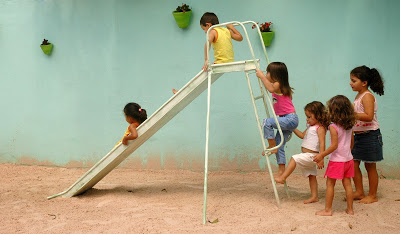Compiled and written by Lisa and Jennifer:
“That’s not fair!” is a common complaint most of us will hear from our child at some point–especially if we have more than one and cake is involved. Before we can teach our child what fairness is, revisiting the dictionary definition can be helpful. Essentially, fairness entails decision-making that is free from bias and self-interest. To be fair is associated with being honest, just, and equitable. Favoritism and fairness don’t go hand in hand. These are elements of moral courage, and it does indeed often take courage to suck it up and do the right thing! What is fair does not always feel good or even make sense to a toddler or a teen. It can be difficult to understand the difference between fair and equal. Therefore, our children are looking to us to model what is fair to help guide them through those uncomfortable, confusing moments when doing the right thing doesn’t feel right. Highlight the fact that justice is blind, but the scales always balance in the end. Trusting that fact takes practice and time.
Here’s a list of 5-Minute Courage Workouts by age range to help you and your child practice fairness.
Grab Some Lion’s Whiskers Today!
- Toddler: The next time you notice that you’re losing your cool with your toddler because it had been a long day and the tantrums plentiful, put yourself in a safe, quiet time-out for five minutes. If you employ this discipline distraction technique, having your toddler watch mommy or daddy sit quietly on the kitchen floor or in a favorite chair might suddenly make the concept of obedience and punishment seem fair. Ensure your toddler is safe and occupied nearby, while you make time-in for yourself and take a few deep breaths. Tell your toddler “Mommy needs to calm down and take a few deep breaths because I was raising my voice/got mad/or am feeling tired,” whatever the case may be. Modeling this kind of equitable self-discipline might make your toddler feel that the rules are not biased quite so much in your favor as it may sometimes feel to them.
- Preschooler: Read Paul Galdone’s The Little Red Hen together at bedtime. This tale of an industrious hen and a lazy cat, dog, and mouse might inspire a discussion about the concept of giving versus getting. Don’t be surprised if your child notices or points out the times when you were both the industrious hen and the lazy dog. Remember that at this age your child probably places no judgement on some of the inconsistencies they notice in your behavior; they’re just gathering information about how the world works.
- Early Elementary: Introduce the “You cut and I choose,” rule to help level the playing field and minimize the often exhausting negotiations over who gets what piece of the pie. The next time you are sharing a serving of food with your child, agree who will cut and who will choose the serving sizes.
- Upper Elementary or Tween: Play the “What would you do?” game during dinner tonight. Introduce a number of possible moral dilemmas pertaining to fairness from your own life experience, or theirs, or take from our following list of possibilities: your teacher has left out the answer key to an upcoming math test on his/her desk, do you keep it to yourself, share it with a friend, do you return it to the teacher?; you know a kid at school who is cyberbullying another of your classmates (you also find this classmate annoying), would your reaction be any different if you are good friends with either party?; a friend invites you to a party, you say “Yes,” and then another friend invites you to what you think will be a better party for the same night; your best friend gets interviewed by a TV news station and gets lots of attention about a project that you both worked on and put in an equal amount of effort into. Encourage discussion about these scenarios and don’t assume what the right thing would be until you’ve debated the various pros/cons of possible “right” responses. Unknowingly loading the deck against your children during these kinds of discussions can quickly silence them and/or limit their engagement–especially if your child tends to think out loud and needs time to play with the idea of what he/she wants versus what he/she is learning about what is right and fair.
- Teens: We may think we don’t make decisions based on self-interest or prejudice, but cognitive bias is a very real phenomenon that can often get in the way of fairness and impartiality. Reinvent the classic “Coke versus Pepsi” taste test that most of us watched ad nauseam between after school TV specials when we were growing up. Set up a test taste between your teen’s favorite national brand food or soda compared with the no-name brand. Use a blind fold and challenge them to discover how brand versus taste focused they may actually be? Fairness means giving each contender an unbiased, impartial try to be judged based on its own merits.
Working on these skills may call upon different types of courage. Review the Six Types of Courage to figure out which types your child might need to complete this workout.
If you’re looking for more workouts, here’s our 5-Minute Courage Workout: A Fate Worse Than Death , 5-Minute Courage Workout: Talking Dirty, 5-Minute Courage Workout: It’s a Dog Eat Dog World, 5-Minute Courage Workout: Home Alone, 5-Minute Courage Workout: A Fate Worse than Death, 5-Minute Courage Workout: Playing with Fire, 5-Minute Courage Workout: Navigating the Neighborhood, 5-Minute Courage Workout: Say A Little Prayer For Me
Care to share what you’ve learned about fairness with your kids?


